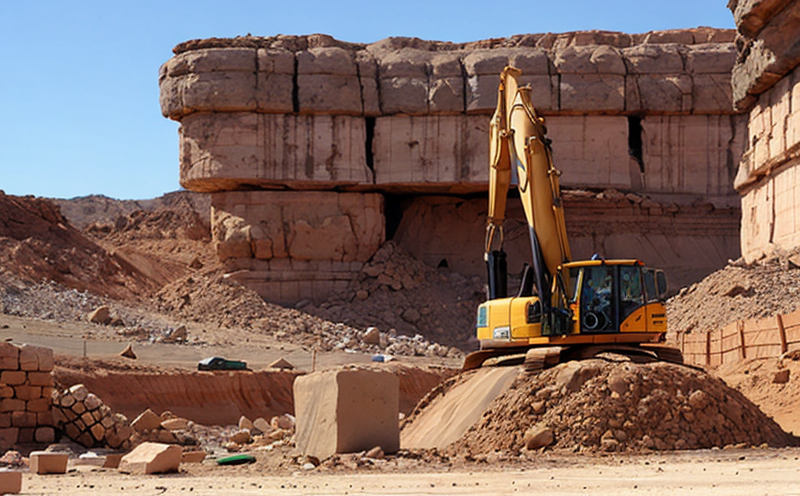DIN 18124 Direct Shear Testing of Rock Joints
The DIN 18124 direct shear test is a fundamental method used in mining testing to evaluate the resistance of rock joints and their potential for sliding under applied stress. This method is particularly relevant in geotechnical engineering, where understanding joint behavior is crucial for predicting ground stability and designing safe structures.
Rock joints are natural or man-made discontinuities within rocks that can significantly influence the mechanical properties and overall integrity of rock masses. Shear strength is a critical parameter in assessing these joints' ability to resist sliding under various loading conditions. The DIN 18124 test provides reliable data on shear strength, which is essential for evaluating the stability of excavation faces, tunnels, and other mining structures.
The test involves preparing rock specimens with an artificial joint surface, applying a normal load, and then gradually increasing the horizontal force until failure occurs. The shear strength can be determined from the peak shear stress or by measuring the displacement at which failure occurs. This method is particularly useful for understanding the behavior of intact rocks, broken rocks, and weathered rocks.
For accurate testing results, specimens must undergo precise preparation to ensure that the joint surfaces are accurately represented. The test setup typically includes a shear box with a precisely controlled normal load and displacement mechanism. This setup allows for consistent application of stress and measurement of deformation until failure.
The DIN 18124 standard provides detailed instructions on specimen preparation, equipment calibration, and testing procedures to ensure consistency and repeatability. It is important that the test conditions closely mimic real-world scenarios to provide meaningful data for engineering applications.
Understanding shear strength in rock joints is vital for mining operations as it helps engineers design safer and more efficient structures. By identifying weak points in the rock mass, this testing method supports proactive measures to mitigate potential hazards. This information can be used to optimize excavation plans, enhance tunnel stability, or improve structural integrity.
The results of DIN 18124 tests are typically reported as shear strength values and displacement data at failure. These parameters provide critical insights into the mechanical behavior of rock joints and their potential for slip under various loading conditions. This information is invaluable for geotechnical engineers, who use it to make informed decisions about excavation designs and support systems.
Applied Standards
| Standard | Description |
|---|---|
| DIN 18124-3:2015-09 | Direct shear test of rock joints - Part 3: Laboratory testing |
| ASTM D6766 | Shear strength determination of intact rock specimens by direct simple shear testing |
Why Choose This Test
The DIN 18124 direct shear test is a robust and reliable method for evaluating the shear strength of rock joints, making it an essential tool in mining testing. By providing accurate data on shear strength, this test helps engineers design safer structures and optimize excavation plans. The precision and consistency offered by DIN 18124 ensure that the results are relevant to real-world conditions.
- Accurate measurement of shear strength
- Precise control over specimen preparation
- Consistent testing procedures for reliability
- Comprehensive reporting on shear strength and displacement data
The DIN 18124 test is particularly valuable in geotechnical engineering, where understanding the behavior of rock joints is crucial. By providing detailed insights into joint stability, this testing method supports proactive measures to mitigate potential hazards. This information can be used to optimize excavation plans, enhance tunnel stability, or improve structural integrity.
The precision and consistency offered by DIN 18124 ensure that the results are relevant to real-world conditions. The test is particularly useful for evaluating intact rocks, broken rocks, and weathered rocks, making it a versatile tool in mining testing.
Quality and Reliability Assurance
- Strict adherence to DIN 18124 standards for specimen preparation and testing procedures
- Precision control over normal load application and displacement measurement
- Regular calibration of shear box equipment
- Comprehensive reporting on test results, including shear strength and displacement data





